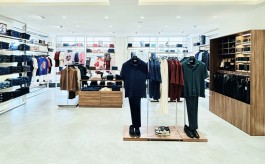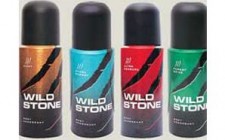The future of retail is retail everywhere: Harley Finkelstein
By Reena Mehta | Vjmedia Works | July 28, 2014
Interview with Chief product officer, Shopify
 There is a belief that there is an online retail and there is an offline retail and that there is a distinction between the two. This will change - omnichannel retailing is the way forward, Harley Finkelstein tells Ankita Rai
There is a belief that there is an online retail and there is an offline retail and that there is a distinction between the two. This will change - omnichannel retailing is the way forward, Harley Finkelstein tells Ankita RaiWhat value proposition does Shopify offer to small merchants planning to sell online? How different is it from marketplaces like Amazon and Flipkart?
When we started out in 2005, we were looking to sell snowboards online. But we couldn't find a practical way to retail the merchandise online. The choice was to either spend $100,000 or more to build a site, or use existing marketplaces like Amazon and eBay which were inexpensive but offered little customisation and scalability. The problem is the marketplace owned your business, it owned your profit margin, it even owned your customer. So we developed our own software to sell products. Six months down the line, people started showing interest in our software and started asking us if they could use our software to sell products. We realised that selling snowboards may be a good idea, but selling software was a great idea. In the last nine years, we have helped hundred thousand small businesses to sell products using Shopify. Today we have stores in more than 150 countries. Our stores have sold more than four billion dollar of products this year.
When a small merchant is just starting out, selling on a marketplace can be a good idea because of the ease of showcasing your products. But don't the economics change if you want to scale up?
Marketplaces are channels. They are a great place to get introduced to new customers but they own the customers and also earn a profit margin. We encourage all our stores to sell and cross-sell on marketplaces as well. Also, when a brand is getting started, it needs visibility so it makes sense to sell on marketplaces as well. But ultimately once you get that initial sale, you want the customer to come to your website.
The best part of using Shopify is that it is not visible anywhere on your website. We charge Rs 818 per month. It is basically a business-in-a-box solution. A merchant can choose from our interesting themes and great store front designs. We also provide backend solutions such as inventory accounting, marketing, and analytics tools. If a merchant has a payment gateway already, he can integrate with us. Else we can provide the online payment solutions. We have also enabled cash on delivery in our payment solution, which is unique to the Indian market.
Beyond Facebook and Twitter, what are the other social networks that can be used for marketing?
Facebook and Twitter are a great way to market on social media. Everyone who ties up with Shopify gets Google adwords credit and Facebook ad credits. That apart, Instagram and Pinterest are incredible tools, especially for product companies, but they haven't caught on in India. These platforms can be more effective than Facebook or Twitter. The reason you are on Facebook is to connect with friends and the reason you are on Twitter is to follow your favourite player, actor, etc. But people on Pinterest are showing intent. For instance, if I pin a pencil on Pinterest that means I like pencils. So if a pencil retailer finds me he knows my interest. This way retailers can turn aimless browsers into shoppers much faster. Similarly, marketers can use Instagram to tell a visual story about their brand, instantly engage with followers.
How should small merchants leverage e-mail marketing? It is still the cheapest way to reach out online.
E-mail marketing is a very powerful tool for two reasons: Before you start selling, you can build a landing page or a blog, and collect e-mail addresses. So when you launch, you may let people know. Second, you may send e-mail pop-ups to your website visitors, notifying an upcoming sale or special offers. This is pre-sale. Email marketing is also effective post-sale. You can e-mail discount coupons to buyers for inviting friends. Third, it can help an e-retailer tackle cart abandonment. So if you notice a customer putting something in her cart and later leaving without buying it, you can e-mail her notifying about colours, discounts and sizes available on that particular product.
The biggest mistake people make in email marketing is focusing only on selling products. So if every e-mail you send to a customer is about sell, sell and sell, you won't be able to build customer loyalty. For example, if a customer is interested in hats, send them an e-mail on the history of hats, or how you design hats rather than constantly focusing on selling hats.
What are the key things to keep in mind when designing a website. What are the pre-requisites of the perfect online store?
There is no such thing as a perfect page. You have to understand that the buying habit of every consumer is different. There are consumers who want to exclusively buy online while some like to buy online and pick up in the store. No two consumers are the same. Perhaps you can invest in a pop up store to showcase your products. That said, having a vertical-specific landing page can really help. For example, if you sell pencils, you can have a demographic-specific webpages, such as student.mypencil.com or architect.mypencil.com. First, figure out who you want to sell to. Don't bombard consumers.
Shopify encourages small businesses to set up pop-up shops. How does the channel work and how does it help e-retailers?
Right now there is a belief that there is an online retail and there is an offline retail. There is a division between them. However, the future retail is retail everywhere - online, offline, mobile, marketplaces. These are just channels. Omnichannel retailing is the future. Everyone will shift to that.
Earlier, when an online retailer wanted to set up a place where consumers could touch and feel the product, he had to rent a place for three/four years. Today, you can rent a place only for a week. You don't even have to sell in these stores, just use them to showcase. Pop-up stores are great opportunities to engage in person with future or present customers. When setting up a pop-up store, however, make sure your offline store resembles your online store and you don't insist on selling. Use it to gather customer information, their email addresses and interests.
Advertisement








